
Nick Stock 2
-
Posts
92 -
Joined
-
Last visited
Content Type
Profiles
Forums
Blogs
Gallery
Calendar
Downloads
Posts posted by Nick Stock 2
-
-
Well I’m glad my conundrum is getting such appreciated attention 🙂
OK - so once I’d got the new servos in and had checked the radio was able to let me achieve a solid mechanical lock at both ends with a fair scope for fine tuning, I did then experiment by reducing the endpoints in the radio to find the minimum travel whereby I was still achieving this and then added a bit more as a margin - but as you say Brian it surprised and disappointed me too slightly. In fairness I may have been a bit hasty here and perhaps spending more time and finessing I could reduce the end points a tad more whilst achieving the same robustness. The buzz will still be similarly prominent as I found with the tinkering that I did do. I think I’m probably pretty much though and trust the settings I have arrived at.
I could have made a career out of the exercise if I wanted to experiment with longer arms on the servo and less extreme end points but my hunch in any case was that the pushrod has limited play in the directions other than that to operate the gear and was therefore likely to cause a new problem and drive me completely over the edge..
The configuration and robust operation of the mechanical units in this case are just requiring the servos to do a bit of extra work to take up any slack in the pushrods so that they stay firmly pinned to their extremities given the geometry I’m basically limited to.
Either way, bothering to run the 30minute timed experiment to me is evidence that my setup is doing very well to combat the risks involved.
Nigel thanks too - useful as a reference to have a fancy graph especially with some explanation!
The only thing not ideal here is that the servos are working hardest in their default positions (gear fully up and fully down) which is how they naturally will be spending the vast majority of the time, only getting a rest midway through the action. In an ideal world this would be the converse.
-
0.8A combined. End points through the radio are near the max as the radio allows in either direction. Can’t say if it’s 180 degrees but probably not far off.
Interesting take and thanks - I still stand by my theory that the motors aren’t getting up to revs so current rockets in order to fight the then relatively higher physical load - beyond the servos capability given the added length of time they were being asked to perform at this level for.
-
Thanks chaps. Update here: I can only speak for my setup but as someone who very rarely makes definitive comments - I am 100% of the opinion that servo slow was responsible for the burnout. This radio feature if really cranked up is basically massively restricting the servo motor from spooling up to its normal rpm whist at the same time drawing more current in order to maintain its positioning. This caused a stall in my case and poof. I had the slow setting at ‘27’ on that channel which in practise had the effect of slowing the travel time from either end point to roughly 4 seconds.
I took the view the next thing to try was to put heavier duty servos in and bought a pair of MacGreggor 20KG HV digital servos. I also felt that powering these servos would be safer to do from a dedicated battery and I had a 1600mah 2 cell life battery to hand that I hoped would be suitable. At 6V these servos are rated around 17KG - way more than before.
I reduced the servo slow setting somewhat and after I carefully readjusted the end points, in order to apply sufficient pressure on the retract pushrods at either end so that the mechanical locks were robustly engaged, in these positions there was still a pretty hefty buzz.
I put a multimeter in the circuit and measured the peak draw momentarily hit about 1.5A with the lowest draw being mid way through the servo travel at around 0.2A. The end points with the hefty buzzing held at around 0.8A even with me giving each retract a bloody good shake around to check the load which was unaffected - proving the system was working as intended.
I decided the final test needed to be a timed control test and did as follows:
Fully charge life battery.
Set a timer on my phone for 30mins.Switch on model and start timer.
Every 3 minutes flicked the switch to cycle the landing gear in the other direction.
Monitor servo temperature by touching occasionally. Same for battery.I did this and there were no
issues whatsoever.
I then put the battery back on charge and the charger put 267mah back in to the pack to my delight.
I do have a 1000mah life but the weight is negligible considering I’ve already got a kilo in the nose.
Im satisfied now so in my books, job done.
Lesson: careful with the servo slow function and test test test.
-
 1
1
-
-
If anyone has a definitive answer to this I’ll be surprised and pleased..
I have been testing my newly installed mechanical retracts in a new model.
I have chosen Savox servos, one for each wing/retract.
Savox SC-0252MG+ Standard Digital Servo With Soft Start 0.19s/[email protected] SC0252MGP
On my Futaba 14sg, I have had to set the end points right the way up and down to get the throws I need for each retract to lock in their up and in their down positions.
The issue is this - I used the transmitters servo slow feature to attempt to make the deployment action look more scale.
Bearing in mind these are servos rated to 10.5KG, there was minor if not negligible binding with the nacelle cutouts (model is a mosquito).
On the side that I had programmed the servo slow speed to be greater (for scale asymmetric appearance) the servo stalled and burned out - a very hairy and Smokey moment!
On testing the remaining working side, when I dialled back the slow effect, the motion was much much smoother.
My suspicion is that the servo slow feature is having an effect of reducing the torque somehow of the servo.
Has anybody experienced anything similar or can a specialist opinion be offered as to any resultant hindrance to servo performance - and some theory as to why my servo burned out?
-
Engine is an ASP .91. Just Engines only have new parts for £50+ and hoping to be saved by a kind fellow modeller..
-
Thanks all so much for taking time to reply.
I now know that it is pretty much as difficult to achieve as I felt!
Saying that, each reply had been delightful to read and highlights practical options for me to consider which answers the post greatly.
Best
23 hours ago, Dale Bradly said:Nick, I'm at the same place as you.
I've been trawling the interwebs trying to find an existing sequence to copy, but haven't found one yet. Ive spent the last year pondering maneovers to use, and looking for guidance on how to string a sequence together, but haven't. What i have found is of course most of this stuff is aimed at aerobatics, and not at warbird display flying. That said, the basics are the same.
I presume you are familiar with the name "Aresti"? e.g. https://iac24.org/wp-content/uploads/2020/02/Aresti-2012-Catelog.pdf
It seems that the system is protected, so perhaps that's why there doesn't seem to be a lot to freely download, however there are plenty of resources on the net about the scheme, and symbology to use.
Names for such things may be less forthcoming.
One thing i found not very helpful was YT videos: With all the editing typically in the videos, zooming in and out, and usually the ground not being in reference, they provided little help in actually identifying something that i wanted to copy into my sequence.
On the flipside, what was very helpful was attending a large (fullsize) airshow recently, armed with a notepad, and scribbling down notes of display pieces that i liked so i could then incorporate these pieces into my own routine.
What i realized is that: (my opinion only)
- A model display consist largely of: passing left to right while "doing something", turning around at the end, passing right to left while doing something, turning around at the end....
- I need to do this without boredom setting in, so not repetitive
- It needs to be entertaining for an onlooker to watch, e.g. start simply, and build to a climax
- It needs to be able to be reversed relatively simply depending on wind/circuit direction
- it needs to suit warbird models, i.e. i believe snap rolls have no place in this routine.
- it needs to be universal, so it could be flown in a Tiger Moth or a Sea Fury
- that said, it should be easy to modify, e.g. the Tiger Moth could drop out the high speed pass (!) as that's pointless, but the Sea Fury could easily take another fit another, all depending on the model.
So the most productive time i have spend was just this last weekend where i spent 2 or 3 hours flying a plastic model around my living room, "modelling" the routine i wanted and scribbling notes on a whiteboard, editing as i went, until i had figured out what i would fly, in what order.
This was quite important, trying to keep the display flowing, and figuring out things like "the last maneuver finished at x height, at y speed, so now that i know that, what is the next thing that suits this starting position", trying to keep it smooth and comfortable.
My sequence starts with takeoff, followed by "horizontal" maneuvers, that is not changing in height, e.g. passes and aileron rolls, then bringing in vertical maneuvers, e.g. loops and cuban eights, before progressing into combinations of the above, where the start and finish are on 45 degree lines, and/or differing heights between start and finish, culminating in a downwind high speed pass to circle and break for landing.
I might publish my sequence when ive confirmed i like it and it works (i'm practicing it on the sim for the near future) but i recommend grabbing a toy plane (even a paper dart) and waving it around your living room and see what flows out of that.
Dale
-
 1
1
-
 1
1
-
Hello forum,
going to shoot this one out here - I’d like to think it’s been answered before so lots of valuable input hoped for and appreciated:
I can fly IC warbirds to a somewhat decent standard. A decent understanding of rudder use in directing my aircraft as intended as an example. Don’t consider myself an expert hence my post though I am looking to hone my core skills.
I am seeking to become more aware of the names and types of manoeuvres so that I can better plan my circuits.
I am asking for suggestions for a sequence for a display of scale aerobatics and any accompanying flying tips that assist good flying practise.
This with properly prepared flights in kind as opposed to do what I feel in the moment for a bit of a change from what I’ve become accustomed to.
P47, Spitfire, Mosquito .100 fs glow, 180 fs glow and 2 x .82 fs are top of my fleet for reference.
many thanks
-
I’m fitting a Laser 180 in place of an Evolution 33cc gas in a Hangar 9 Spitfire.
I presumed I’d be able to reuse the engine mount that the evo was bolted to.
The mount is made of aluminium and features a long slot in each beam which 4 non-metric bolts were fastened through.
On closer inspection, I am surprised a slot system isn’t risky over the usual holes we normally drill through grp/nylon mounts where there is material front and back of the screws.
Furthermore, aligning the Laser 180 to this mount creates an overlap between the slot channel and the engine crank bolt holes. I can only fit four M4 screws as opposed to M5s that I was aiming to use. These will be fastened with nyloc nuts and washers.Do we think this is acceptable or any risk of the engine shifting loose?
-
Thanks for all input above.
Got to admit, I’ve never seen breaking bad but I feel I don’t have to after this madness..I bought some antifreeze variant hoping it would do the trick but truth be told after 45 minutes freezing my nads off(!) I really wasn’t having much joy.
I think repeated soaks in semi-sizzling antifreeze and vigorous rubbing with a soft scrubber might have helped in the end but only a little. Anyone have a clue why?
so I resorted to using a mild abrasive block - a turquoisey/greenish one that
normally comes as a rotary tool attachment accessory and buffing after.
needless to say, it’s not a perfect finish as new but passable imo.
have chosen an 18% klotz synthetic mix fuel 15% nitro to try and avoid this situation next time
FYI sink unblocker is the WORST thing to go near these alloys from this experience as I have a few dulled areas as a result but minor changes enough
-
Thanks for the tips
-
Hi folks just needed to post my question which is relevant here.
I’ve tried all sorts of household cleaning products, rubbing alcohol, a particular penetrating form of wd40, hell, even drain unblocker as a mad last resort. Bought an ultrasonic cleaner and repeated the above and concoctions in it but to absolutely no avail. I’m trying to clean or dissolve really the caked on tar like substance which I believe to be burnt castor oil(?) off my Saito silencer.
can anyone help guide me?
tx
-
Seagull happen to list J.Perkins according to that link, so thank you.
-
Thanks - who are these wholesalers? Are they familiar names?
-
Do manufacturers of ARTF kits tend to supply direct to our retailers or are there distributors or even wholesalers too working in the background?
For example, are Seagull, Blackhorse, Kyosho, Hangar 9.
I can see that Freewing for example passively mention on their website that they offer discounts for wholesale purchase but other manufacturers seem to refrain from advertising this option..
Any idea in particular, how best to go about buying seagull models in bulk?
Thanks in advance if anyone sees and can help.
-
In all fairness, I tried with some self adhesive thin rubber imitation material I have on a roll wrapped around the mole grips but it just slipped. End of the day I had no option and aside, it’s not a brand spanking new engine but a tried and tested workhorse and it worked without any damage to the hub other than slight cosmetic. Had to be a practical solution so boasting about how else it could have been done doesn’t really add anything I’m sorry to say.
I use a 12” adjustable wrench to tighten my props with significant force. I do get concerned about over tightening so once I get to the point where I’m about to get blue in the face I stop.. any one want to jump in here?
best
-
-
Succeess!!!
with the cowl screws removed, I was able to wangle the cowl back enough to squeeze in some mole grips around the prop driver. May have scratched it a little in the process but very minorly. It then did not take much force really at all to twist the nut off with a spanner. It’s difficult to make out where the damaged threads are - on the prop shaft or on the nut itself.
ive just managed to screw the spinner nut on though at it went on without much fuss.
my question now follows, is this nut the appropriate method of securing a prop I.e without the prop retaining nut that come with engine? I presume yes but please could someone advise definitively!
thank you all so so much for your support
best wishes
nick
-
Thank you all for your responses and so swiftly too,
I’ve added photos to illuminate things more:
first photo showing the nut in it’s position when screwed up to the prop (which I intend to replace anyway once all this is done)
second photo showing the nut unwound as far as it goes before the engine simply turns over.
Third photo showing how little clearance there is for an adjustable spanner etc to grip to prop driver.
photo showing how cowl cannot move backwards due to the centre section of wing being in the way. I will be removing the centre section now to see if I can get the cowl to move backwards in order to revert the driver. I’m going to try and grip it with an adjustable spanner with some soft leathery type material to see if I can get a decent but safe grip.
have ordered a piston stop from Amazon which is due to arrive tomorrow but will almost certainly send it straight back.
im hoping I can just force this nut off the thread by working it forwards and back.
thanks all again
nick
-
Hi Everyone, happy New Year and hope you are weathering the covid storm safely.
The prop retaining nut is already screwed on the shaft. It can be tightened up to the prop retaining washer (with the prop behind it) and tightened up no problem. However there was an adapter nut in front of that nut in which the long spinner socket cap screw screws in to to attach the spinner to it all. That nut was only screwed on by the end 2 ish threads and seems as if the previous owner has damaged the end threads of the prop shaft, meaning that the prop retaining nut locks up on it when I try to unscrew it.
I also cannot remove the cowl (if I were wanting to remove the engine from the mount) as the spinner backplate and prop cannot be removed to allow this.
When the nut locks up when trying to unscrew, I cannot apply any significant force other than that of the engine compression which is not enough to provide enough 'locking force' to push against and the engine simply turns over.
I've tried WD-40 fast release penetrant and heating the nut up with a (very small) butane blowtorch. Not powerful enough to get red hot or anything like that but either way, neither have helped much.
Would anyone be able to suggest a solution to the above?
I've looked in to removing the spark plug and 'dropping cord' in above the piston so that it presses up against the cord before it reaches tdc, providing a locking force to act against .. but I'd hesitate to do something like this without assurance that no harm can come to the engine and which specific cord to use!
Other than that, I dread taking a dremel to the prop retaining nut to try and create some 'relief' cuts and I really am concerned that I'll risk damaging the threads of the shaft further, whilst at the moment, there could still be a chance that the damaged threat portion can be cleaned up.
Finally, if anyone else is familiar with the type of spinner nut adapter I mentioned earlier (the spinner is an aluminium one that comes included in the arf kit in this case a 33cc H9 spitfire) - is that adapter (same internal and same outside hex size as the engine retaining nut) enough on it's own to replace the prop nut that comes with the engine? I say this for two reasons - 1/ if I've had to wreck the prop retaining nut in the process of getting it off and 2/ so that it grips the shaft with 10+mm of thread instead of 2 threads (2-3mm).
Any help incredibly appreciated.
Best
Nick S.
-
Pretty self explanatory basically but just hoping to get a better idea before committing to one when they arrive back in stock in December.
If all is good, I’ll be putting a 4s glow ic of some sort in mine but has anyone already got this model up and flying well?
Seems to be very little coverage on this model on the web..
Huge thanks
Nick
-
Hi folks,
got caught out on a take-off with my Seagull P-47 today, just as I’ve started to really get a feel for her flying characteristics in the air and on landing.
Lucky, on this occasion the ‘only’ damage was main retracts being ripped clean out of both wings and some minor tears under the wings and a slight dent in the lower front fuse.
I’m hoping some of you may be able to offer some advice on my take off technique:
I have to start my run up with full back elevator, otherwise the model will simply nose in when any power is fed in. My gear is raked as far forward as possible. Flaps set at half.
I was then adding a bit of power just to get the model rolling and then fairly quick on to full beans.
as I get to full throttle, I quickly release the amount of elevator I’m holding to balance the model on the main gear but doing my best to let it run for a bit to build up speed. I have been lifting off the ground early like this and have come dangerously close to tip stalling.
Today I tried feeding power in more gently and trying to ‘feel’ the elevator amount needed so that I was on the main gear, balanced, before smoothly progressing to full power.
The model lifted early, stalled, hit the deck and subsequently slid across the rough.
Has any one else gone through a learning curve with heavier tail dragging warbirds and have advice?
Nick
-
All great and interesting responses so thanks everyone.
I'm gluing wood to wood for those who asked.
Personally, I am set (no pun) on using an epoxy though interesting that some of you have used aliphatic etc to good effect. Noted now that (particularly) excessive use of epoxy comes with a high weight cost, but this is line I intend to straddle because of my slight paranoia of the tail snapping off under heavy load in flight.
I'm going with Araldite Standard dual syringe which is repositionable for up to 2 hours and I know will set rock hard.
-
I'm nearly at the point where I want to assemble the horizontal tail assembly to the fuselage.
I have plenty of 20 minute cartridges from screwfix lying around but would prefer to use something more suitable.
Any suggestions here? Brands? Cure time?
Edited By Nick Stock 2 on 15/08/2018 12:21:03
-
Posted by David Ovenden on 13/08/2018 13:35:26:
 Just a thought. Is the elevator hinge point really where you show it in the diagram? Aren't they normally hinged at the centre of the circle that forms the radiused leading edge, rather than at the leading edge itself? If so, that would affect the geometry of your diagram.
Just a thought. Is the elevator hinge point really where you show it in the diagram? Aren't they normally hinged at the centre of the circle that forms the radiused leading edge, rather than at the leading edge itself? If so, that would affect the geometry of your diagram.Edited By David Ovenden on 13/08/2018 13:41:05
David good point - perhaps in the actual full size the hinge point was/is some distance within the leading edge. However my Robart hinges have their hinge points effectively dead in the middle between the outer most part of the leading edge and the trailing edge of the horiz stab, perhaps at most within a few mm. So I take the view now that as long as I'm in the right ball park, I can adjust surface deflection with the position of the pushrod at the servo end (inwards or outwards) and then fine tune with my transmitter (end point).
N









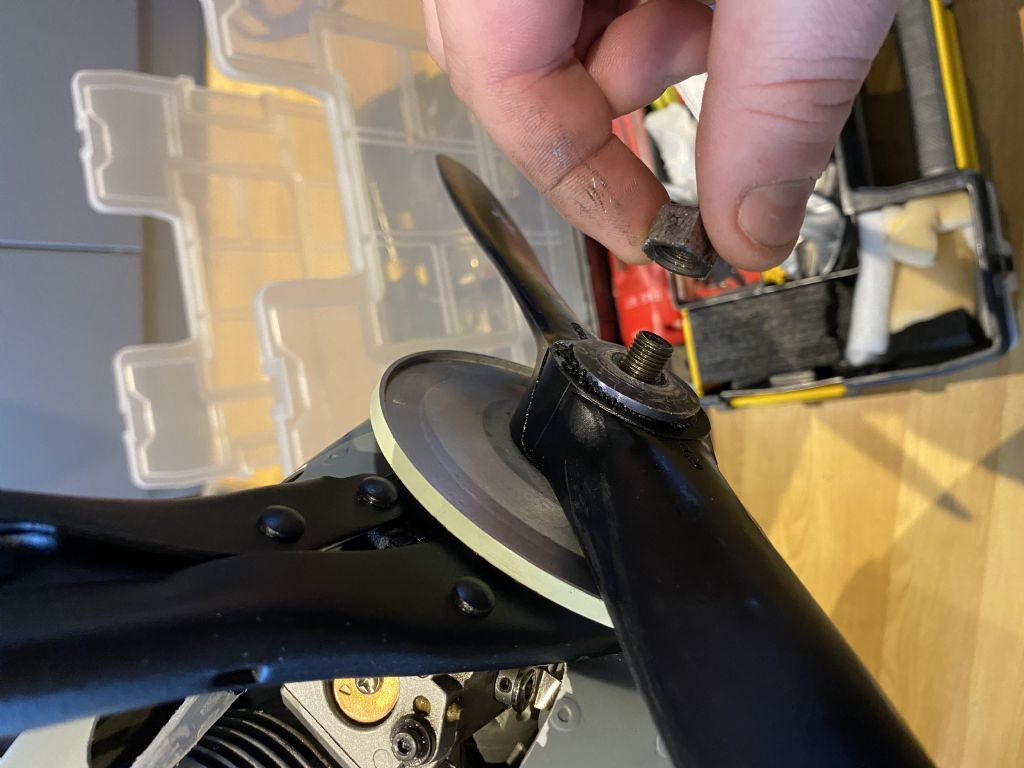
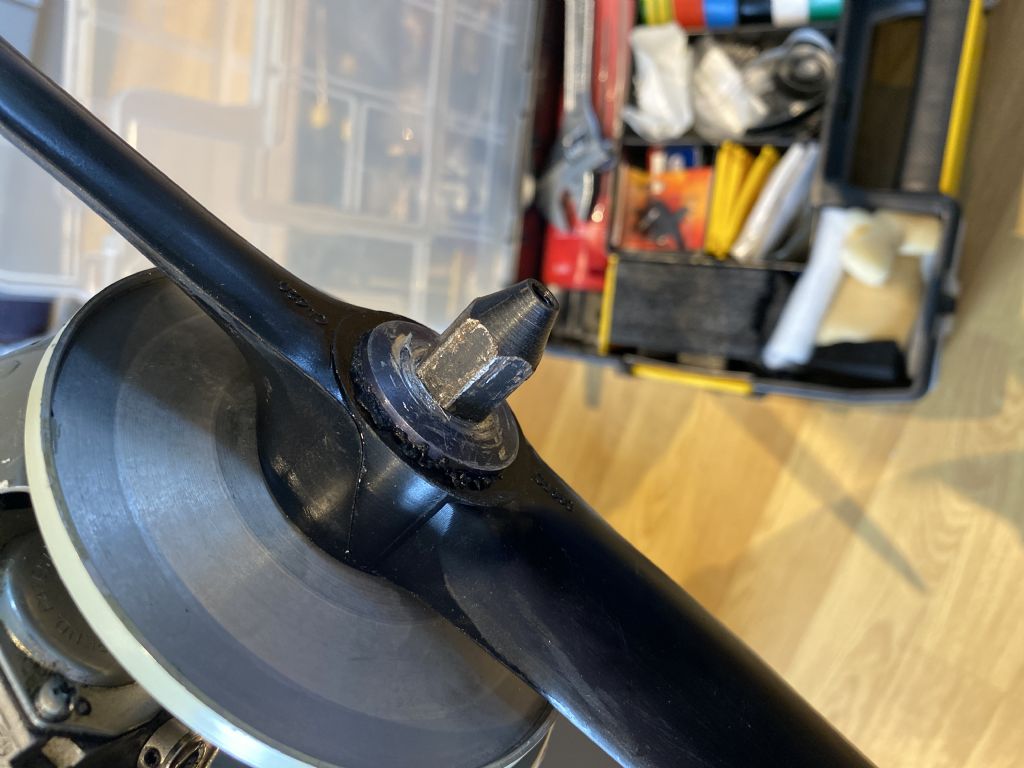
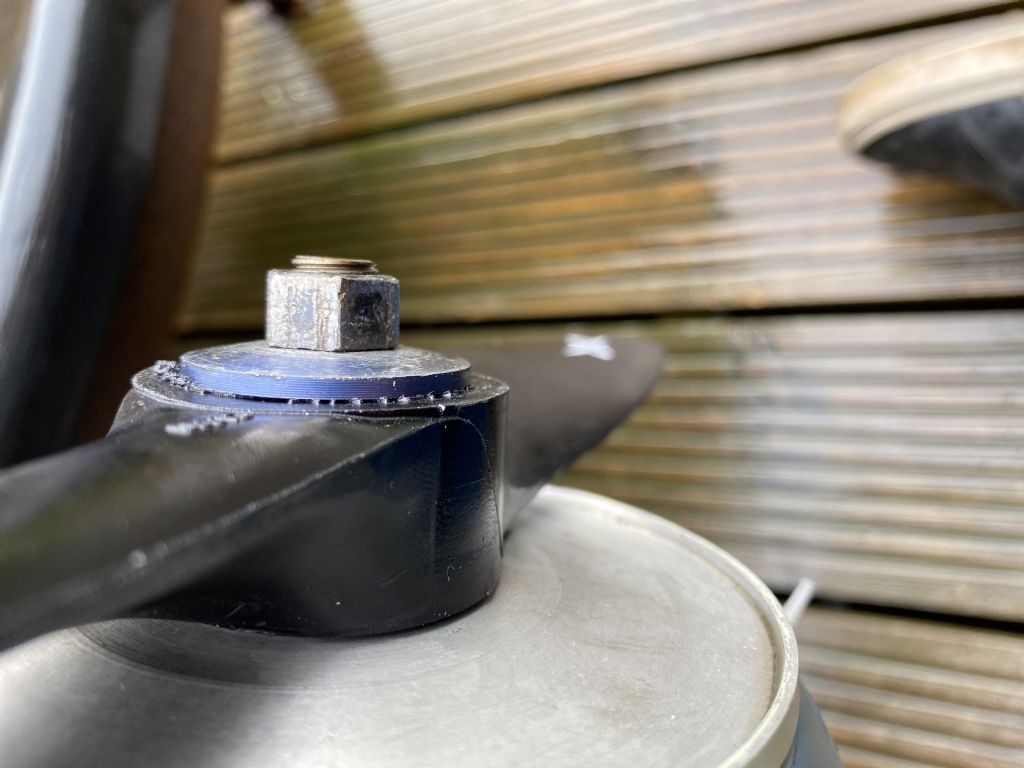

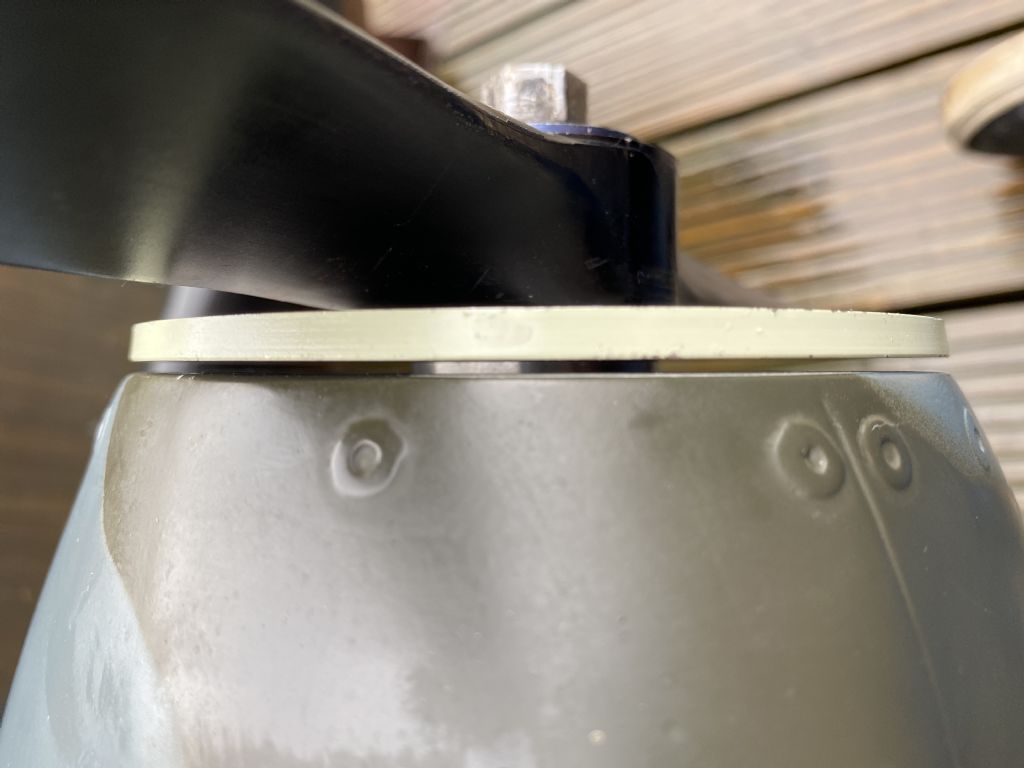
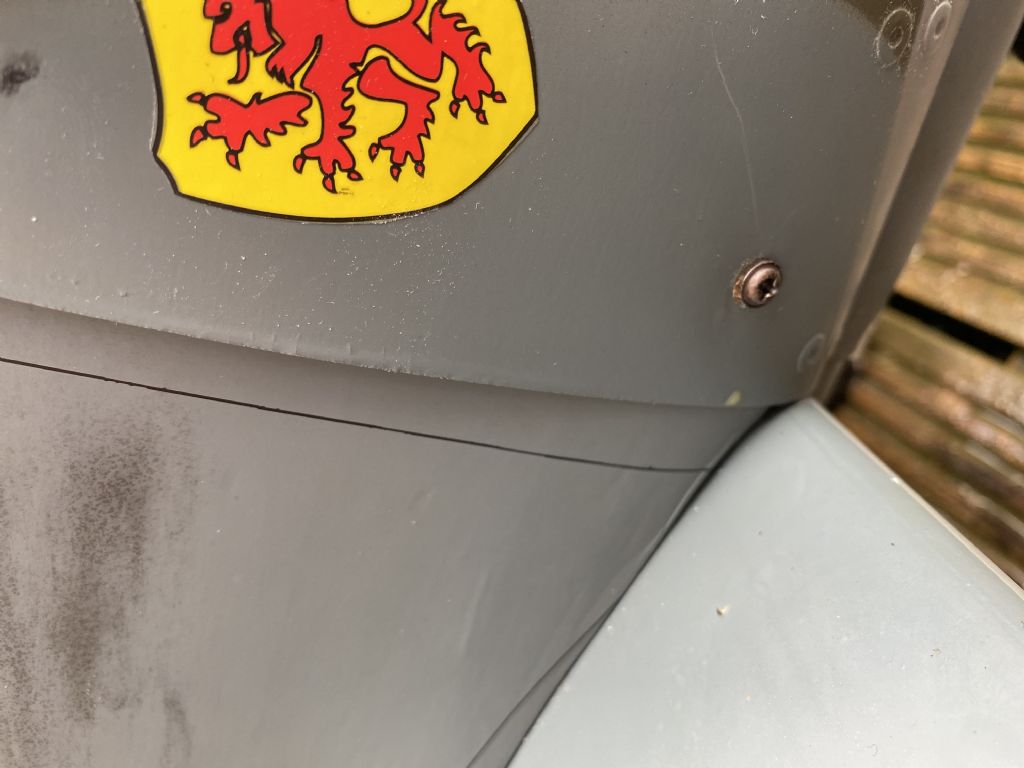
Servo slow function query Futaba 14sg
in Futaba
Posted
Just to add a flavour of context here - this particular ‘ARTF’ model has consumed a mere 100-150 hours of my time thus far.. At what point does love of one’s hobby become a serious diagnosis? 😬